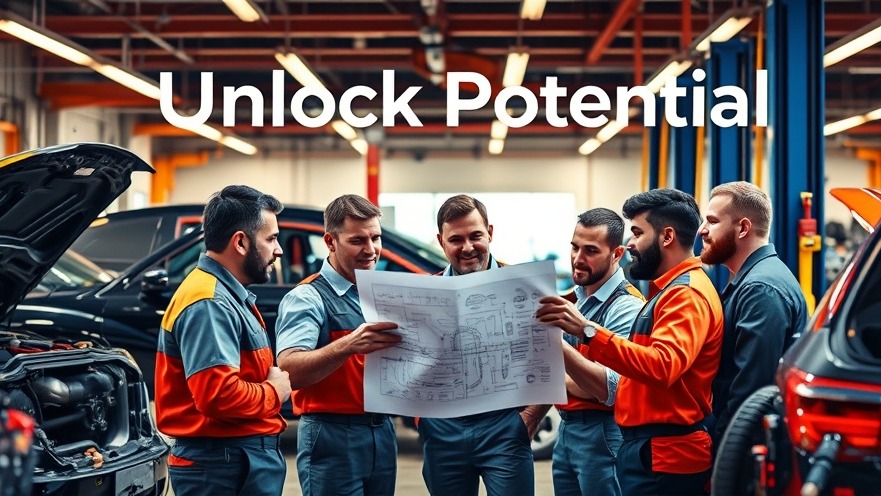
Understanding the New Landscape of Automotive Inspections
The automotive industry is facing a revolution as traditional combustion engine vehicles give way to hybrid and electric vehicles (HEVs and EVs). This shift demands that auto repair shop owners adapt their inspection processes to meet the specific challenges these advanced vehicles present. Digital Vehicle Inspections (DVI) have emerged as a modern solution, providing enhanced safety, efficiency, and precision, thus making them essential for any repair shop aiming to stay competitive in today’s market.
Why Digital Inspections Are Essential for HEVs and EVs
While conventional inspection methods may have sufficed for internal combustion engine (ICE) vehicles, they fall short when applied to HEVs and EVs. These vehicles are characterized by their complex systems—from high-voltage batteries to regenerative braking. Adopting DVIs allows repair shops to tackle the unique diagnostic needs of these vehicles head-on, ensuring accurate assessments and fostering customer trust through transparency in reporting.
Essential Tools for Effective Digital Inspections
Equipping your shop with the right tools is critical for successful digital inspections. Key tools include:
DVI Software: Select software that allows for detailed reporting complete with visuals like photos and videos to enhance customer understanding.
Battery Analyzers: Necessary for evaluating battery health, capacity, and state of charge.
High-Voltage Testers and Thermal Imaging Cameras: These tools are crucial for evaluating system integrity and identifying potential overheating issues.
OBD-II Scan Tools: Essential for accessing EV-specific diagnostics that reveal crucial insights into vehicle health.
Safety Protocols to Follow During Inspections
As HEVs and EVs operate on high-voltage systems, adhering to stringent safety protocols is non-negotiable. Ensure that all technicians are trained in:
De-energizing systems before inspections.
Utilizing appropriate personal protective equipment (PPE) such as insulated gloves and safety goggles.
Referencing the vehicle’s service manual to stay informed about specific manufacturer guidelines.
Key Areas to Inspect in Hybrid and Electric Vehicles
A comprehensive inspection should cover the following critical components:
Battery Health: Document the State of Health (SOH) and address any thermal issues.
High-Voltage System Integrity: Inspect connectors, cables, and perform resistance tests.
Regenerative Braking Systems: Ensure smooth transitions between braking mechanisms and check for performance consistency.
Thermal Management Systems: Evaluate cooling fluid levels and inspect the integrity of hoses and pumps.
Charging Systems: Verify onboard charger functionality and compatibility with various charging stations.
Enhancing Customer Communication
DVIs not only elevate safety and accuracy but also transform how shops communicate findings to their customers. By including clear visuals and explanations in digital reports, technicians can help customers understand:
The implications of identified issues on their vehicle’s performance and safety.
The recommended actions for repairs or maintenance.
The importance of proactive maintenance in ensuring the longevity and efficiency of HEVs and EVs.
Future-Proofing Your Repair Shop
With the increasing prevalence of hybrid and electric vehicles, adapting inspection practices is more vital than ever. Engaging in technologies like Digital Vehicle Inspections not only modernizes your approach but also positions your shop as a leader in the evolving automotive landscape.
Investing in DVIs will certify that your shop not only meets current industry standards but also propels itself into the future, ensuring you’re well-equipped to handle the complexities of electrified vehicles.
 Add Row
Add Row  Add
Add 




Write A Comment